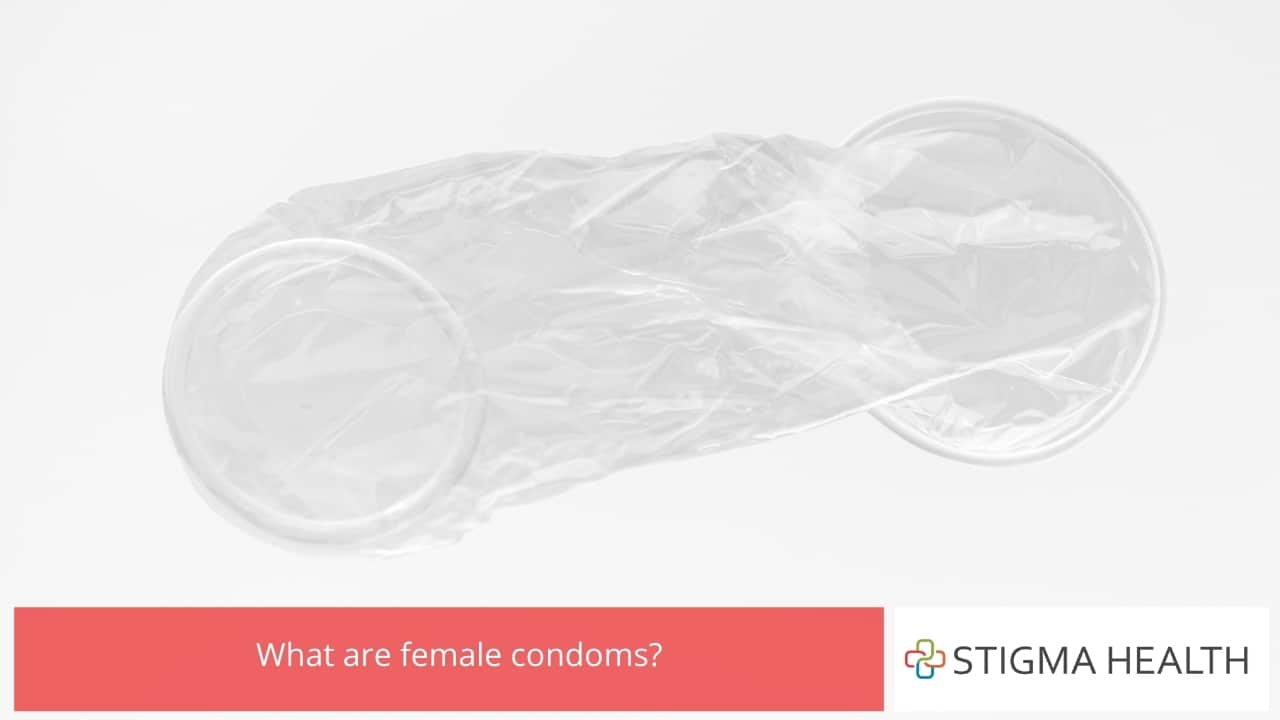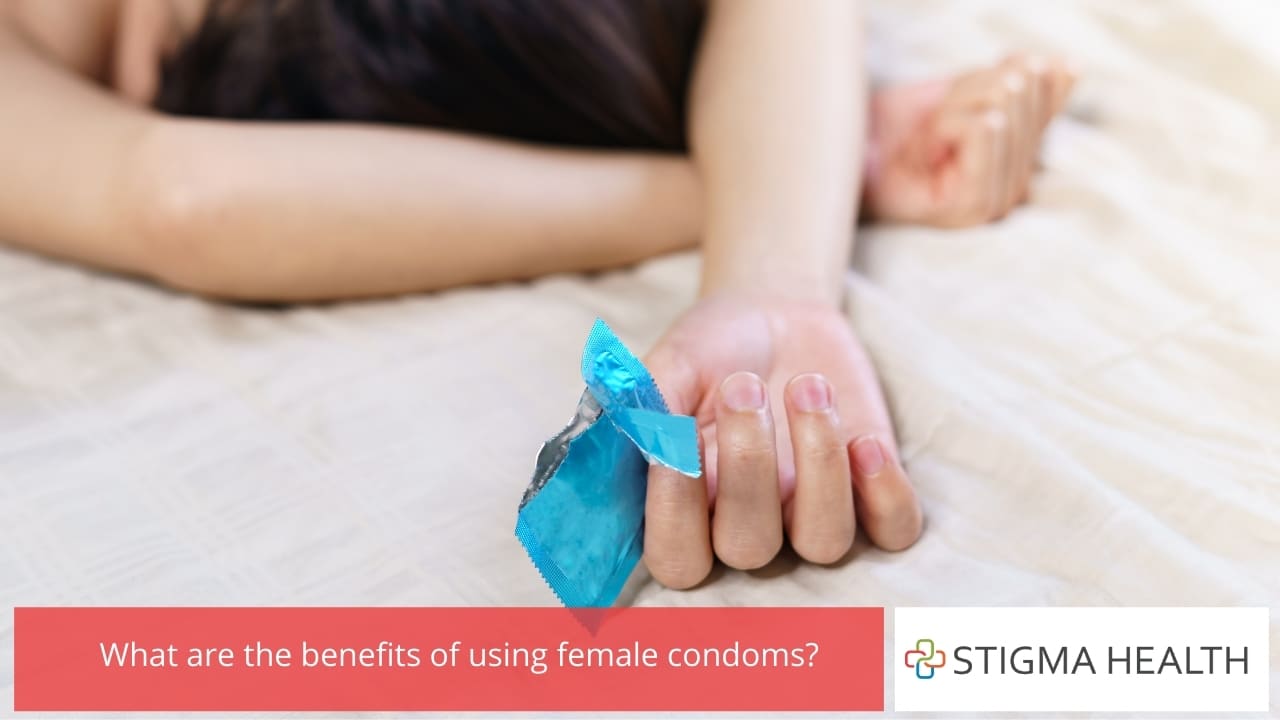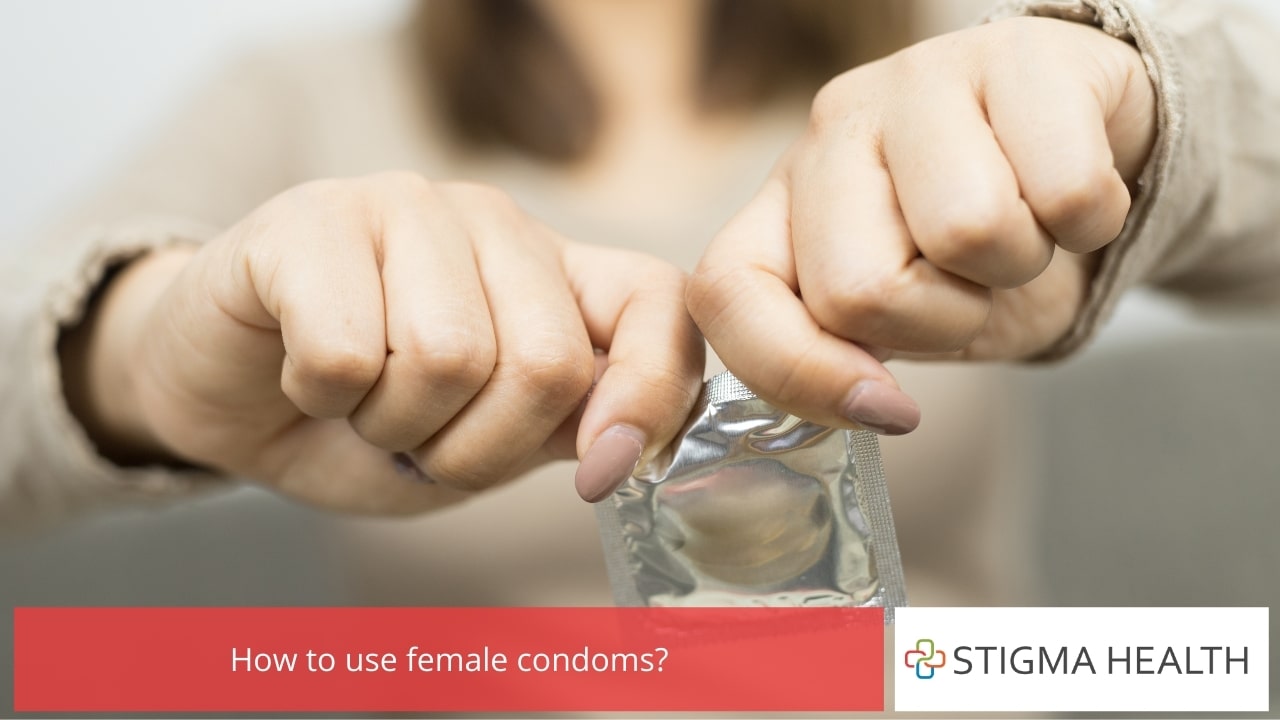What are contraceptive condoms for women and how do they work?
Female condoms, sometimes called internal condoms, are barrier-type contraceptives that can be inserted into the vagina before sex to prevent pregnancy.
Female condoms offer several benefits other than just preventing conception. We have compiled detailed information about female condoms and complied a comprehensive list of the benefits of female condoms so that an informed decision can be made before engaging in sexual activity.

What are female condoms?
When we say condoms, we only think of the commonly used and accessible types of condoms that are male condoms. These are also called external condoms as they are placed on the outer side of the erect penis before sex.
Male condoms have been used for several decades as a barrier method to prevent conception.
Female condoms, on the other hand, are modern and latest method of contraception that can be used by women. These condoms are called internal condoms because they need to be placed inside the vagina.
Unlike male condoms, female condoms can be inserted into the vagina nearly eight hours before sex.
Most female condoms have a flexible ring on both their ends. The internal ring present on the vaginal side of the condom helps to hold it up inside the vagina, while the external ring prevents the condom from getting pushed up inside the vagina.
These rings are the protection to avoid unwanted lodgement of the condom inside the vagina.
The external rings of some female condoms also cover a part of the genitals called the vulva.
How do female condoms work?
Female condoms are soft little pouches made of nitrile that you insert into the vagina. These condoms cover the inner side of the vaginal canal thus creating a barrier, which blocks the sperms from reaching the egg during intercourse. This can prevent the process of fertilisation, which can occur only when a sperm reaches an egg, thus preventing pregnancy.

What are the benefits of using female condoms?
Here are some advantages of using female condoms that make it a superior choice of contraception compared to other traditional methods, including male condoms.
- The female condoms can be inserted into the vagina about 8 hours before sex. They do not require an erection, unlike male condoms that need an erection before they can be put on. This is a huge benefit for couples who do not like interruptions in the foreplay and intercourse to use contraception.
- Most couples complain that stopping to find, open, or insert a male condom on the penis after sufficient foreplay disrupts their erections and kills the moods. Female condoms offer an advantage here as they allow couples to circumvent the need to stop midway while having sex as these contraceptives can be inserted several hours before sex.
- Watching the partner insert the internal condom may boost the sexual desire and kickstart foreplay.
- Women need not remove the female condom immediately after sex when the partner has not ejaculated. In case the partner has ejaculated, it might get messy when they stand up. However, female condoms can be easily removed while lying down without creating any mess. You just need to grasp the external ring of the condom and gently twist it around to seal up the ejaculate fluid for an easy and quick clean up.
- Female condoms are approved and specifically designed for vaginal sex. However, some couples have reported using them for anal sex, though this is not ideal nor their intended use.
- Female condoms are usually made of nitrile or polyurethane, both of which are safe to use even by women allergic to latex. Also, nitrile or polyurethane condoms can be used with any type of lubricants. The packaging of most female condoms has information about latex allergies and the use of additional lubricants for compatibility written on them. Since female condoms are made of hypoallergenic materials, they are less likely to irritate the sensitive genital skin or cause the symptoms of allergies.
- Female condoms are larger in size than male condoms. So, they do not fit tightly around the penis when it is inserted in the vagina. This would give the partner’s penis more comfort by providing additional breathing room.

How effective are female condoms for preventing conception?
When used perfectly, each time you have sex, female condoms can be highly effective for preventing pregnancy. The effectiveness of this contraceptive is estimated to be nearly 95%.
However, most couples do not use these condoms in the right manner. So, in real life, they might be about 79% effective, which means approximately 21 out of 100 women who use female condoms as the only method of birth control have a chance of getting pregnant.
How can you make female condoms more effective?
The effectiveness of female condoms can be increased by using them in the correct way and during each sexual encounter.
Women should use them every single time they have vaginal sex from start to finish. Also, make sure it is in place in the vagina before there is any genital contact.
You can also consider using female condoms with any other birth control method such as oral contraceptive pills or an IUD to make them better at preventing conception. The combination of female condoms and pills or IUDs might offer added protection from STDs as well as double protection from conception.
It is normal for female condoms to move around a bit during sex. So, make sure the penis is completely surrounded by the condom from start to end of the intercourse. You may stop if you feel the penis has slipped out of the condom into the vagina or if the external ring has got pushed into the vagina. If there is no ejaculate yet, you can remove the condom gently and put it back in place before continuing with sex.
Also, most women make a mistake of using 2 female condoms at a time with a belief this would provide additional protection. However, it is advisable to not use 2 female condoms at a time or use them with a regular condom. Remember that each type of condom is meant to be used on its own. Doubling up would not provide any extra protection.
It is also advisable to avoid the intake of alcohol or recreational drugs as it may affect your movements and thinking and reduce your ability to use the condoms correctly. It may also cause you to forget using condoms. Hence, women should avoid drugs and alcohol as one of the ways to improve the effectiveness of female condoms.
Taking these precautions will make female condoms more effective and help you avoid unwanted pregnancy.

Do female condoms interfere with sexual pleasure?
No. In fact, female condoms can increase sexual pleasure.
As you can insert these condoms ahead of time, before you get busy with foreplay, it would keep the things spontaneous without any interruptions needed to insert a condom. Having your partner put female condom for you can also improve your intimacy and foreplay thus increasing sexual desire and pleasure.
Moreover, during vaginal sex, the inner ring of female condoms might stimulate the tip of the penis. At the same time, its external ring would rub against your clitoris and vulva. This might provide an extra feel for both of you and improve sexual pleasure further.
Do female condoms protect against STIs?
STIs or sexually transmitted infections are the major concerns for sexually active men and women. STIs like HIV/AIDS, gonorrhoea, and chlamydia can cause moderate to severe complications with a very high risk of spread during sex.
Female condoms are designed to provide protection against these STIs. They can reduce your chances of sexually transmitted infections by creating a barrier for the entry of semen into the vagina and by covering the inner side of your vagina, parts of the vulva, and anus.
This would lower the possibility of coming into contact with infected semen or skin of your partner thereby inhibiting the spread of STIs.

How to use female condoms?
Here is the step-by-step method explaining how to use female condoms:
- Check the expiry date on the packaging and open it carefully.
- Most female condoms are already lubricated. Hence, you do not need to add lubricant while inserting. However, if you are suffering from vaginismus, severe dryness of the vagina, or dyspareunia (pain during sex), you can consider adding lubricant.
- If you are inserting the condom in the anus, remove the internal ring and push it in with your fingers.
- If you are inserting the condom in the vagina, leave the ring in. Now, stand or lie down in a comfortable position. Squatting or standing keeping one foot on a chair can also help to insert a female condom easily. Gently squeeze the sides of inner ring at the end of the condom and put it in your vagina just like a tampon. Slide its inner ring into the vagina up to the cervix or as far as it can go.
- Make sure the condom is correctly placed and not twisted. Now, pull out your finger letting the external ring hang approximately an inch outside the anus or vagina.
- During sex, hold the condom open when the penis is going into it to ensure it does not slip to the sides between the vagina/anus and the condom. Follow the same while inserting a sex toy.
How to remove a female condom?
- If there is semen in the condom, gently twist its outer ring, which is the part hanging out, to prevent the semen from spilling out from the pouch.
- Now, pull it out of the vagina or anus slowly while being careful not to let the semen escape.
- Throw the condom in the trash. Do not flush the condoms as it may clog your toilet.
Remember that female condoms are not reusable. Always use a new condom each time you have sex.
Female condoms give you more control. Since female condoms are small, portable, and discreet, they provide an easy and convenient way for women to protect themselves from unwanted pregnancy and STIs. Female condoms let women take charge of their sexual health even when their partner does not want to use a condom. If you need advice on your sexual health or have any questions, don’t hesitate to contact Stigma Health today!
